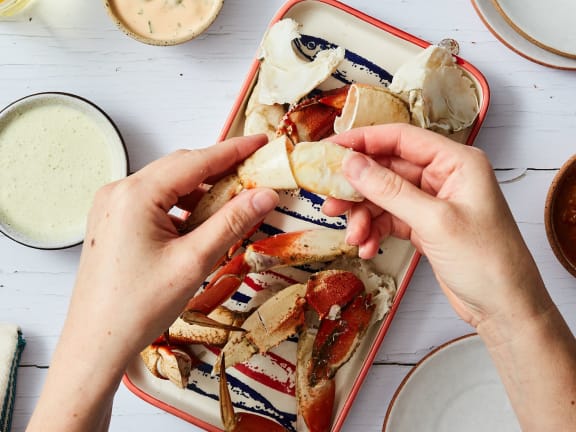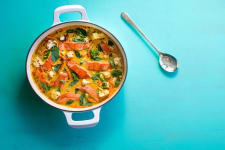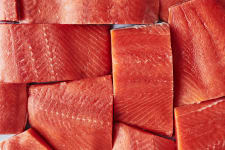
How to Steam Dungeness Crab
October 20th, 2020Quick, Intense Heat for Maximum Moisture
Snap-and-Eat Dungeness Crab comes pre-cooked and pre-scored for your ease and convenience. That means that its ready to heat and eat, straight out of the pack! One of the best ways to heat this renowned Pacific crustacean, beloved for its sweet and briny flavor, is to steam it.
A quick, intense dose of steam preserves the moist, tender texture of high-quality crab meat. Steaming also allows the meat to retain more of its own juices and flavors, making this heating method great for multipurpose use of the crab meat, perfect with dips, on salads, made into crab cakes, and flaked into a variety of dishes.
How to Steam Dungeness Crab in Under 10 Minutes
1. Set a steamer basket into a pot large enough to accommodate your Dungeness crab legs and claws, filling the bottom of the pot with an inch of water.
2. Bring it to a boil and add the crab to steamer basket. Close the pot with a tight-fitting lid or aluminum foil, and allow to steam for 4 minutes if thawed and about 6 to 8 minutes if frozen depending on size of pieces.
3. Plate and enjoy!
How to Steam Dungeness Crab Without a Steamer
If you don’t have a steamer basket or pressure cooker, you can simply cover the bottom of a wide pot with water — less than ¼ inch in depth — and steam your legs directly in this layer of liquid. It should be shallow enough that your crab legs are steamed rather than boiled, but contain enough water so that the liquid doesn’t burn off before your legs are finished warming through.
Should You Defrost Your Dungeness Crab?
When steaming most wild Alaskan varieties of seafood, thawing out proteins before introducing them to heat is the best way to ensure even doneness and ideal textures in the final product.
For Dungeness crab legs with hefty shoulders (the end that’s been separated from the crab’s body), we highly recommend defrosting before heating to ensure that it heats through evenly.
If you’re using Dungeness crab legs with small shoulders, or just heating up some smaller pieces, you can heat Dungeness crab legs from frozen more evenly. We suggest rinsing off any ice glaze under cold, running water first.
Steamed Dungeness Crab Legs
By Wild Alaskan Company
Prep time
5 minutes
Cook Time
10 minutes
Total time
15 minutes
Yield
nan
Ingredients
- 1 (32 oz.) pack Snap and Eat Dungeness Crab
Instructions
1. If using a steamer basket: Fill a pot with an inch of water, then add a few lemon slices. Nestle steamer basket in pot and cover with lid, then bring water to a simmer over medium heat until steaming. Add crab to basket and cover with lid. Continue to steam over medium heat for 5 minutes if using defrosted crab; 10 minutes if using frozen crab.
2. If NOT using a steamer basket: Fill a wide pot or pan with about ¼ inch of water and add a few lemon slices. Cover with lid and bring to a simmer over medium heat until steaming. Then, add crab and cover with lid. Continue to steam over medium heat for 5 minutes if using defrosted crab; 10 minutes if using frozen crab.
3. Enjoy while hot, alongside your favorite dipping sauces.
Consuming raw or undercooked meats, poultry, seafood, shellfish, or eggs may increase your risk of food-borne illness, especially if you have a certain medical condition. The FDA recommends an internal temperature of 145°F for cooked fish.





